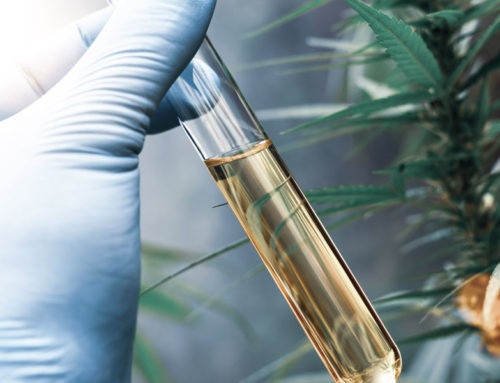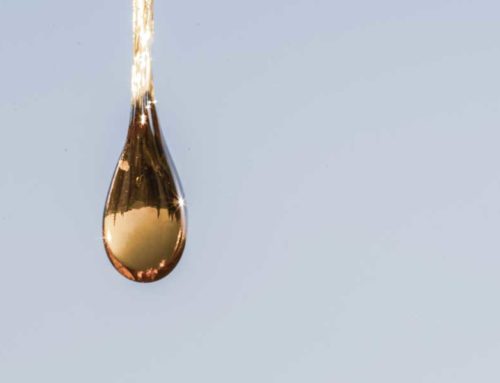Everyone these days is talking about the medicinal benefits of CBD.
And for many people, the idea that CBD, which can be derived from either the cannabis or the hemp plant, can actually offer our body a multitude of different health benefits, is a bit of a mind-blower.
Side note: Both plants are part of the cannabaceae species, but hemp is generally characterized by plants that are low (less than 0.3%) in delta-9 THC, the dominant psychotropic compound in the cannabis plant and generally has high levels of CBD, the primary non-psychotropic compound.
How can this one plant offer so many different medicinal properties?
What we know so far, is that the key to this question lies in a class of compounds called “cannabinoids”.
Cannabinoids = A class of diverse chemical compounds that act on cannabinoid receptors, located in what is called the endocannabinoid system (ECS), an internal physiological system found in humans as well as other mammals, fish and even birds. There are three types of cannabinoids; phytocannabinoids, endocannabinoids, and neutral cannabinoids.
Let’s take a look at the different types of cannabinoids and how they work in our bodies.
What are phytocannabinoids?
The cannabis and hemp plants produce a class of compounds called phytocannabinoids.
Phyto = Pertaining to plants or plant-based.
Although most phytocannabinoids are found in the cannabis and hemp plant, other cannabinoids are also found in very small amounts in plants like liverwort and echinacea.
So far, scientists have identified over 100 phytocannabinoids in the cannabis and hemp plant. And while the entire plant contains phytocannabinoids, the plant’s viscous glandular structures called trichomes contain a much higher concentration of these active compounds than the rest of the plant.
These phytocannabinoids found in the plant are in what is called their ‘acidic’ form. Some of the major acidic phytocannabinoids are:
THCA: Δ9-tetrahydrocannabinolic acid
CBDA: Cannabidiolic acid
CBGA: Cannabigerolic acid
CBCA: Cannabichromenenic acid
THCVA: Tetrahydrocanabivarinic acid
CBDVA: Cannabidivarinic acid
CBGVA: Cannabigerovarinic acid
CBCVA: Cannabichromevarinic acid
The “A” at the end = 2-carboxylic acids
What are neutral phytocannabinoids (AKA cannabinoids)?
When phytocannabinoids are activated, or decarboxylated, of their 2-carboxylic acids by heat, light, or alkaline conditions, they then turn into neutral cannabinoids, generally referred to as simply “cannabinoids”.
These neutral phytocannabinoids are the cannabinoids most people are familiar with when they think of cannabis and hemp:
THC: Δ9–tetrahydrocannabinol
CBD: Cannabidiol
CBG: Cannabigerol
CBC: Cannabichromene
CBN: Cannabinol
THCV: Tetrahydrocannabivarin
CBDV: Cannabidivarin
CBGV: Cannabigerivarin
CBCV: Cannabichromevarin
These cannabinoids are non-intoxicating except for THC: Δ9–tetrahydrocannabinol.
What are endocannabinoids?
Endo = Endogenous, meaning produced or synthesized within an organism or system. This means that endocannabinoids are cannabinoids created within our body, and they engage with our internal cannabinoid receptors. Dr. Raphael Mechoulam isolated and identified not only the structure of THC Δ9-tetrahydrocannabinol, but also the two main endocannabinoids operating in our body:
Anandamide: Arachidonoylethanolamide
2-AG: 2-arachidonoylglycerol
Anandamide is a neurotransmitter produced in the brain that binds to cannabinoid receptors similarly to THC, producing similar effects. This is why Dr. Mechoulam named anandamide after the Sanskrit word ananda, which means “joy, bliss, or happiness,” because of its properties as a mood enhancer. Scientists believe that 2-AG is the primary endogenous cannabinoid for both the CB1 and CB2 receptors in the central nervous system.
Activation of anandamide and 2-AG results from our body’s constant pursuit to achieve and maintain homeostasis and according to Dr. Mechoulam, “have been found to play a role in the central nervous system but also in most physiological systems, including the immune system, the cardiovascular system, the reproductive system, the respiratory system, and the skeletal systems, to name a few.”
Cannabinoids and how they work in our body
Endocannabinoids, along with phytocannabinoids and neutral cannabinoids, interact with our body by exerting their effects, either as antagonists or agonists, on the specific cannabinoid receptors (CB1 and CB2) in our endocannabinoid system. You can think of cannabinoids as keys and our cannabinoid receptors as locks. In the case of cannabinoid receptors, several keys can work on the same locks. These three different types of cannabinoids fit into and act within our endocannabinoid system in different ways.
As our ECS is a balancing mechanism that supports homeostasis, if a problem is detected, it will use tools to help our body regulate balance. Turns out that cannabinoids are the tools. They act as checks and balances. Our body creates endocannabinoids when we need them – as we need them – to support this homeostasis within our body, and then quickly breaks them down.
When we take cannabinoids into our body exogenously(by ingestion), they can help support our endocannabinoid system if our body’s homeostasis is disrupted due to an imbalance of our own endocannabinoids, or when we have what is called clinical endocannabinoid deficiency (ECS). Science is in its infancy stages in terms of fully understanding exactly how these different types of cannabinoids individually and inter-connectively work within our bodies, and to exactly what extent our endocannabinoid system regulates other systems within our bodies.
What we do know for sure is that more research is done into clarifying the therapeutic potential held within these molecules, the closer we will be to promoting better health and well-being overall. These phytocannabinoids are non-intoxicating, and although the research on them is slight compared to other cannabinoids, we do know that many cannabinoid acids possess medicinal properties and have antibiotics or insecticidal properties.




